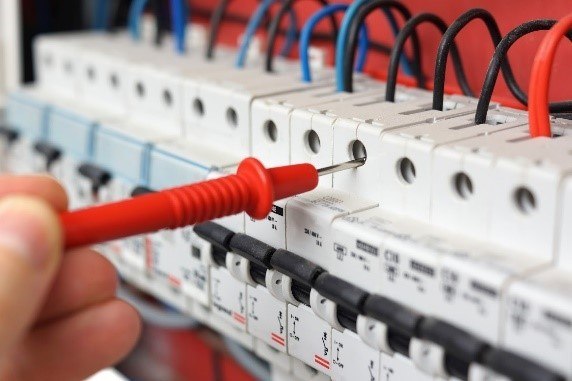News & Events
November 1, 2019
Tips for Left-Handers Starting a Career in Electrical Contracting

People who are left-handed often have to take extra steps when doing activities with their hands. When a left-handed person decides to begin an apprenticeship or training program as an electrician, they may have to approach certain tasks differently.
If you’re left-handed, follow our tips so that you can get started off on the right foot in the field in electricity and will thrive through training and eventual job placement.
Right-Handed Practice
While on the job, a number of electricians will find themselves in tight quarters or areas where the use of the left hand is not ideal. Before you find yourself stuck and unable to complete a job, you should train your body to do some tasks with a right hand.
Take five to ten minutes a day to practice manipulating basic electrician tools with your right hand. This habit will help you train your right hand and accomplish tasks smoothly with the use of both hands. For example, you may use a screwdriver with your right hand to practice screwing in and taking out screws.
Another common tool that electricians use are cable cutters. Along with right-handed practice with the cable cutter, try to implement everyday skills. For example, you could practice using scissors with your right hand to cut out newspaper coupons.
Left-Handed Tools & Accessories
A majority of tools and accessories available at hardware stores are catered to people who are right-handed. Take some extra time to find tools and accessories made for left-handed users. With the adjusted tools, you will have more comfort and success while you complete electrical work.
For example, you may purchase a tape measure with reverse features so you can easily measure lengths and distances with your dominant hand. A left handed utility knife also features easy button access for a left hand and faces the sharp end of the blade on the proper side so left-handed cuts are more accurate.
Tool belts and vests will also have specific left-handed versions. With the different versions, you have the ability to access specific areas of the tool belt without awkwardly reaching across like you would on a standard tool belt.
When you start your electrical training with these tools, you will be equipped to complete all the tasks with ease.
Reverse Instructions & Habits
In many cases, your training will involve the use of wires. As a lefty, you may naturally twist a set of wires counter-clockwise. For most electrical installations, contractors would prefer clockwise wire twists. The wire twist instructions are just one of the ways a lefty’s mind has to process electrical instructions.
Sometimes you may either have to perform instructions in reverse to fit with left-handed movements or go against the intuition you have when you use the left hand. While you train, take a little extra time to go through the movements for certain tasks and retrain your hand’s natural instincts.
Communication Skills
While in the early stages of electrical training courses, proper communication will go a long way in helping you thrive as a left-handed student. By communicating with the instructor, you will have the ability to quickly learn any differences between the general instructions and the instructions that are best for you.
The course instructor may have also taught other left-handed students before you. They may give you extra tips to get used to right-handed jobs or know of specific tasks in which they know a right-hand is needed. By communicating any problems and questions that you might have early on, you will avoid problems in the future.
Get started with our training right away at Independent Electrical Contractors of Greater Cincinnati. We have training and apprenticeship opportunities to help you out no matter which hand is your dominant one.